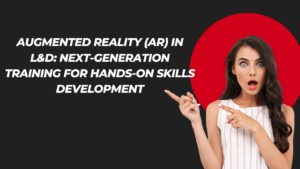As we enter 2025, corporate training is more critical than ever in developing a skilled and adaptable workforce. Learning and Development (L&D) professionals must stay ahead of the curve by implementing best practices that enhance training effectiveness and engagement. This blog outlines essential strategies for corporate trainers to optimize their training programs, ensuring they meet the evolving needs of employees and organizations.
10 L&D Best Practices for Corporate Trainers
1. Personalized Learning Paths
A personalized learning approach is no longer optional; it’s a necessity. In 2025, corporate trainers should focus on creating customized learning experiences tailored to individual skill gaps, job roles, and career aspirations. Utilizing AI and data analytics can help identify these needs, allowing trainers to design pathways that combine various formats—such as videos, simulations, and self-assessments—resulting in higher engagement and knowledge retention.
2. All-In-One Learning Platforms
To streamline the training process, adopting an all-in-one learning management system (LMS) is crucial. This centralized platform allows trainers to monitor employee progress seamlessly and provides insights into training effectiveness. By eliminating the need for multiple platforms, organizations can create a more cohesive learning experience that enhances accessibility and engagement.
3. AI-Driven Skill Development
Incorporating AI-driven tools into training programs can significantly enhance skill development. These technologies help identify skill gaps and predict future upskilling needs, ensuring that employees remain competitive in an evolving job market. By leveraging AI analytics, trainers can align their programs with emerging trends and technologies.
4. Role-Based Skill Mapping
Understanding the specific skills required for different roles is essential for effective training. Role-based skill mapping allows trainers to develop targeted content that addresses the unique competencies needed within the organization. This approach not only enhances relevance but also increases employee motivation by aligning training with their career goals.
5. In-Depth Learning Analytics
Utilizing learning analytics enables trainers to assess the effectiveness of their programs through data-driven insights. By tracking metrics such as completion rates, engagement levels, and performance improvements, L&D professionals can make informed decisions about future training initiatives and ensure they are meeting organizational objectives.
6. Social and Collaborative Learning
Encouraging social and collaborative learning fosters a sense of community among employees. By leveraging platforms that facilitate peer-to-peer interactions—such as discussion forums or group projects—trainers can create an engaging learning environment that enhances knowledge sharing and teamwork. This method not only improves retention but also builds stronger workplace relationships.
7. Microlearning
With busy schedules becoming the norm, microlearning—short, focused segments of training—is gaining popularity. This approach allows employees to learn at their own pace and convenience, making it easier to fit training into their daily routines. By delivering content in bite-sized formats, trainers can enhance retention and application of knowledge.
8. Immersive Learning Technologies
The use of immersive learning technologies, such as Virtual Reality (VR) and Augmented Reality (AR), is set to grow in 2025. These tools provide realistic simulations that allow employees to practice skills in a safe environment. For instance, IT professionals can troubleshoot systems without real-world consequences, leading to better-prepared employees.
9. Gamification of Training
Incorporating gamification into training programs can significantly boost engagement levels. By integrating game-like elements—such as points, badges, or leaderboards—trainers can motivate employees to participate actively in their learning journey. This strategy not only makes learning more enjoyable but also encourages healthy competition among peers.
10. Continuous Feedback Mechanisms
Establishing continuous feedback mechanisms is vital for improving training outcomes. Regular check-ins and assessments allow trainers to gauge employee understanding and adjust content accordingly. This iterative process ensures that training remains relevant and effective over time.
Conclusion: Future-Proofing Corporate Training
As we look ahead to 2025, implementing these best practices will be essential for corporate trainers aiming to enhance employee development initiatives effectively. By focusing on personalized learning paths, leveraging technology, fostering collaboration, and utilizing data-driven insights, L&D professionals can create a dynamic training environment that meets the needs of both employees and organizations.
In a rapidly changing business landscape, embracing these strategies will not only improve employee engagement but also contribute significantly to organizational success by cultivating a skilled workforce ready to tackle future challenges.
By prioritizing these best practices in L&D strategies, corporate trainers can ensure they are well-equipped to foster a culture of continuous learning that drives both individual growth and organizational performance in the years to come.









